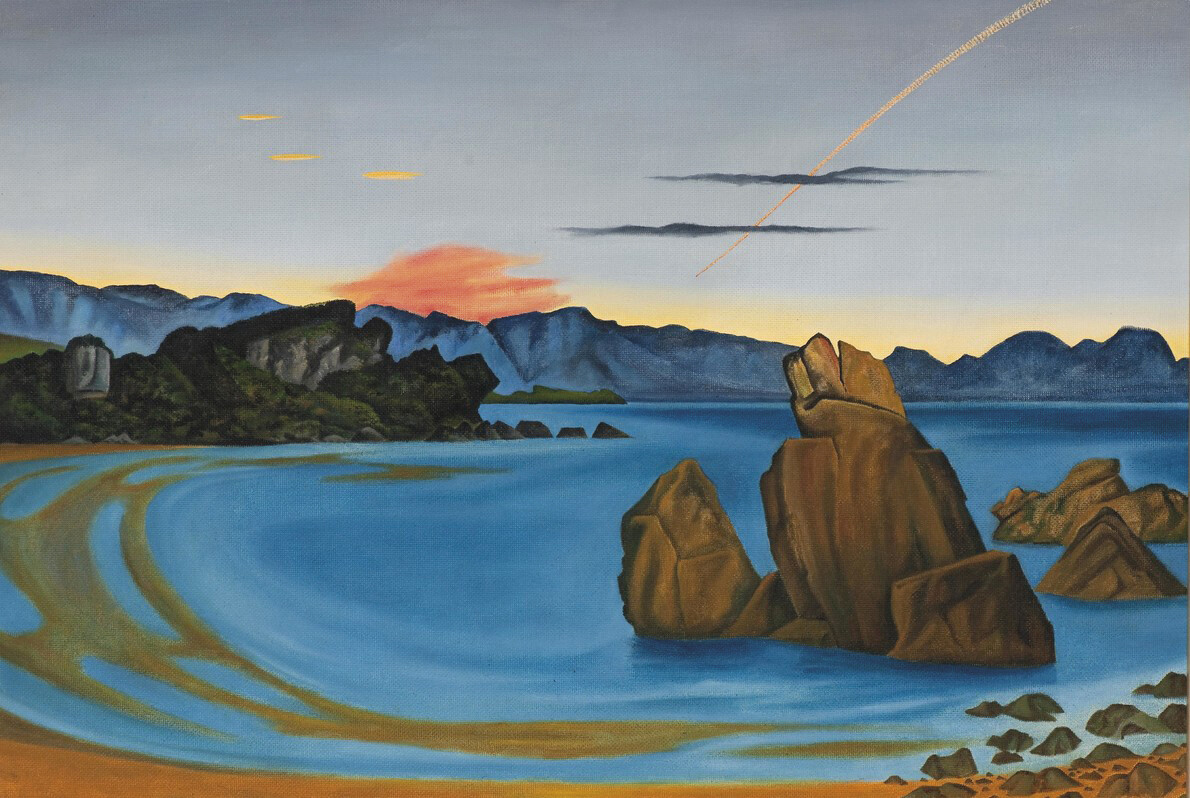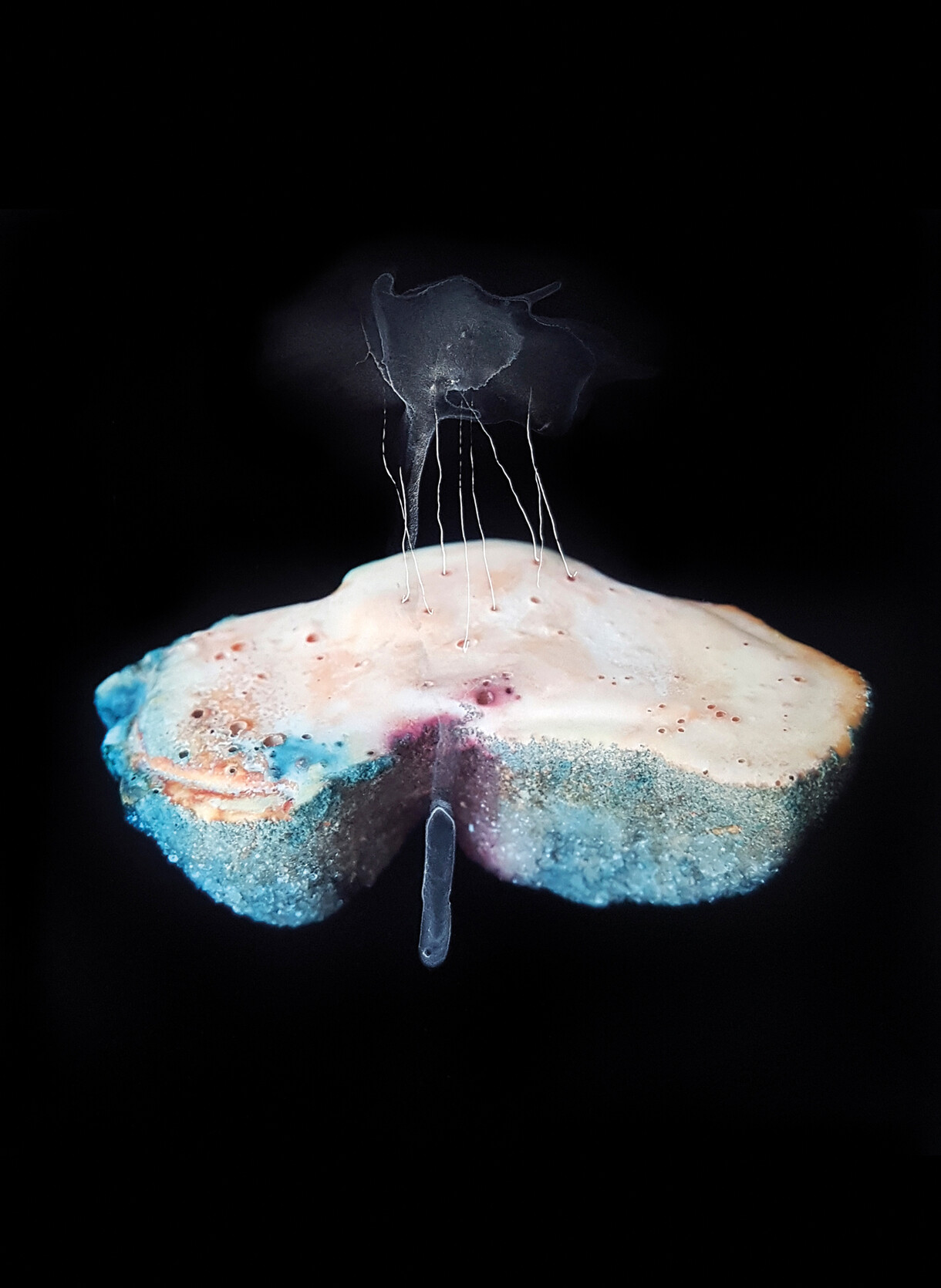Director’s Foreword

Louise Pōtiki Bryant Te Hā o Papatūānuku (still) 2024. Single-channel video with soundtrack by Paddy Free. Collection of Christchurch Art Gallery Te Puna o Waiwhetū, purchased 2024
As I write this it’s a cold and gloomy Ōtautahi Christchurch day and the Gallery is abuzz with a wide range of visitors, family groups and children, taking part in our school holiday workshops and programmes, and filling our spaces with activity, excitement and laughter. It’s a lovely warm place to be on a grey day. Hopefully by the time this Bulletin arrives in your hand there’s a sense that spring is arriving, trees are greening up and the days are longer once again. By then we will have recently opened our major new collection focused exhibition to replace Perilous: Unheard Stories from the Collection.
Our new exhibition is called He Kapuka Oneone—A Handful of Soil, and we’ve used this title to suggest the powerful and lasting connections that can exist between people and land. The phrase is written in Kāi Tahu dialect, and recalls a well-known whakatauākī attributed to Manawaroa, a Te Arawa rakatira who was captured and imprisoned by Ngāi Tuhoe. From captivity in Te Urewera, he longed to return to his place of his birth. Believing he was near death he made this request of his captors: “Tukuna mai he kapunga oneone ki au hei tangi.” Send me a handful of soil that I may weep over it.
He Kapuka Oneone—A Handful of Soil explores the fundamental role whenua plays in the visual language and identity of Aotearoa New Zealand. The exhibition comprises painting, sculpture, ceramics, photography, moving image, printmaking and weaving by historical and contemporary artists, all brought together to reveal how land has been a material and subject for art in Aotearoa for hundreds of years.
I’m very excited about He Kapunga Oneone as it beautifully reflects one of our key principles, which is to increase Māori representation in collection. To this end it contains a number of important new acquisitions and commissions—I’m particularly looking forward to seeing Ross Hemera’s Ka moe te whaea i te wai on the walls. In this issue of Bulletin our curators each pick one of their favourite works from the show to look at in greater depth.
This quarter also sees the opening of two new exhibitions that feel like they’ve been waiting in the wings for a number of reasons. Dummies & Doppelgängers is a show that was first proposed over a decade ago, just before the 2010/11 Waitaha Canterbury earthquakes. Put on ice by the long closure of this building, it was again on the table and in development when Covid closed the building, and the country, in 2020. So, it’s wonderful to finally be in a position to introduce the exhibition. Accompanied by an excellent publication, the selection of sculpture, video, photography and more from Aotearoa and Australia in Dummies & Doppelgängers is a funny, surreal and touching examination the power of alternative identities. Here, the exhibition’s curator Felicity Milburn looks at the evolutions undertaken by some of the works it features.
Another exhibition impacted by the earthquakes was Leo Bensemman: A Fantastic Art Venture. Opened on 11 February 2011, it was rudely closed just eleven days later by the earthquake of 22 February. So I’m very pleased that Leo Bensemann: Paradise Garden will offer another chance to look at one element of the output of a painter who is often overlooked—fingers crossed we have more time to appreciate his work this time. For Bulletin, curator Peter Vangioni delves deeper into Bensemann’s ongoing fascination with the landscape of the Mohua Golden Bay region.
Outside of this building, our residency programme based at the former home of artist Bill Sutton continues breathing life into the city’s Red Zone. Throughout May of this year it was home to artistic duo Edwards + Johann as they worked towards a new exhibition for this building, which opens in early September. The pair talked to Felicity about their interdisciplinary approach to art-making.
I’m also excited that by the time this magazine is published we’ll be much closer to the installation of Yona Lee’s Fountain in Transit (2024), commissioned by the Christchurch Art Gallery Foundation to mark the twentieth anniversary of the Gallery building in 2023. Part domestic bathroom, part civic fountain, this site-specific sculpture brings a playful but peaceful energy to this building. Using flowing arrangements made from the kind of stainless-steel tubing associated with urban spaces and public transportation, Lee connects us with the history of the Gallery building and site. Gifted by Ngāi Tahu, the building’s name, Te Puna o Waiwhetū, refers to the waipuna (artesian spring) beneath this building. The curving lines of its architecture, echoed in Lee’s sculpture, acknowledge the sinuous path of the Ōtākaro Avon River through the city. A nearby tributary is called Waiwhetū, which can be translated as ‘water in which stars are reflected’.
Fountain in Transit has been a big fundraising project for the Foundation over the past eighteen months and I’m enormously grateful for all the hard work and support they provide the Gallery. Thanks also to Yona Lee, her gallery, Fine Arts, Sydney and all the people who have generously supported the commissioning of Fountain in Transit. But don’t worry, it’s not too late for you to help too! If you’d like to be part of this incredibly exciting new work then please contact me or the Foundation’s partnerships manager, Jacq Mehrtens.
Another excellent way to get involved is to join us at the Foundation’s annual gala dinner, which will be held in one of our beautiful gallery spaces on Friday 18 October. I don’t want to give away too much at the moment, but I can promise that it will be a fantastic night to remember!










